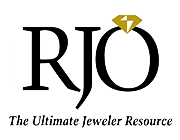The following is a reprint of an article by Larry Johnson that appeared in Canadian Jeweller magazine.
Please tell me a story about this merchandise
Rarely does a week go by at our house when we do not get some kind of charitable solicitation in the mail. Children around the world in unimaginable situations, diseases in need of cures, political candidates trying to save us all from each other, the list of needs seems endless. Sometimes we write a check and sometimes we do not. I noticed however that we are much more likely to contribute if the cause has a backstory. “This child, Farouk (with photo) is in desperate need of food in the Sudan” is more compelling than “Send money because children (in general) are in desperate need of food in the Sudan.” Stories help us relate, empathize with a message and sometimes, take the desired action.
Telling the backstory behind the jewelry in your showcases accomplishes the very same connection. It establishes interest in the piece at a level beyond the simple cold specifications for the item. Sure, it is made of 14kt gold with 3 sapphires and 4 small diamonds, but isn’t there more to the piece than this?
Who designed this? Where was it made? Where did the stones come from? Do you know anything interesting about sapphires and their lore? Is it handmade? Where did you (the jeweler) find it and what was it about the piece that caught your attention? Where will I wear the piece? Does it fit my lifestyle? Will it be an heirloom in my family?
Tell a story and you will increase the odds of a sale significantly. Tell the story in your showcase displays and props and you’ll really see results. If you are selling pieces made by a designer in your store, include the background story in a small card on your display. The designers name is never enough unless it is world-famous. It always amazes me when I see a display is in a case with the name only and it is a name nobody knows! “The John Doe collection” means nothing by itself and puts you in the position of having to explain from scratch who John is instead of selling the beauty and romance of the piece.
If the pieces in a collection are handmade, include a small tool or other prop that communicates that fact. “Handmade” items are perceived as being superior and the result of talent and skill. (Are virtually all items in a typical fine jewelry store “handmade?” I think this selling point is being overlooked. Place some small hand-made signs in the showcase emphasizing this fact and see how the conversation changes)
If you are selling a lot of colored stones ( or want to be), be sure your sales team knows the folklore behind the most popular stones. “Ancients believed a ruby, worn in a chest pocket had the power to keep an arrow from penetrating the heart.” Did you know the 3 crossbars in a star sapphire signify “Faith, Hope and Destiny?” Your customer will likely never know this unless you tell them.
To tell stories effectively in your showcases, look for displays, signage and prop items that help communicate the tale. These need not be long or expensive, just enough to start the conversation rolling. Lots of good prop ideas can be found on Ebay and other auction sites. Be certain your staff knows the story and is comfortable telling it. Watch your customers reactions to these stories and drop the ones that draw no response. Build on the ones that seem to work well.
Man has sat around campfires and told stories for hundreds of generations. Used properly, they will light a fire under your sales too.
As always, let me know if I can help you in any way to make your store more successful.




